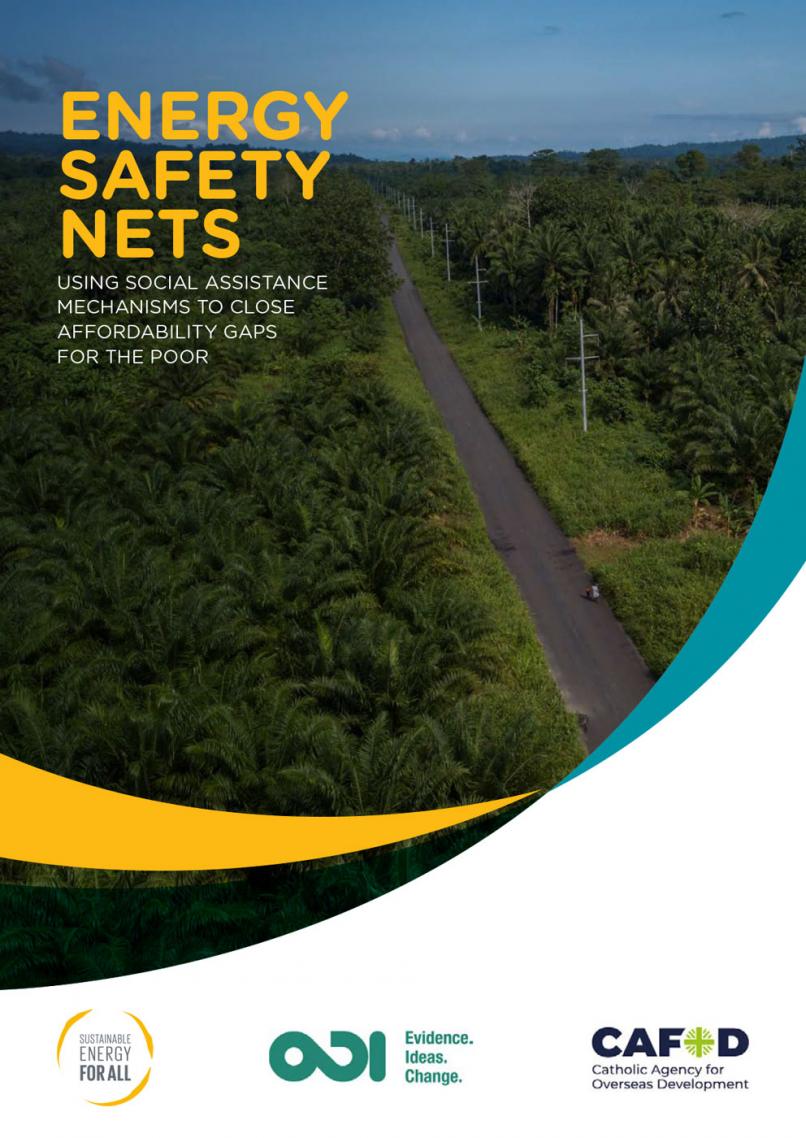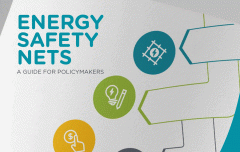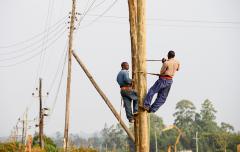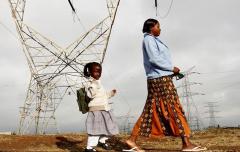Energy Safety Nets: Using Social Assistance Mechanisms to Close Affordability Gaps for the Poor
The Sustainable Development Goal 7 (SDG7) mandate to ensure access to affordable, reliable, sustainable and modern energy services for all, means that even the poorest and most disadvantaged in society should have access to modern energy by 2030.
Energy Safety Nets: Using Social Assistance Mechanisms to Close Affordability Gaps for the Poor synthesizes lessons learned from six country case studies from Brazil, Ghana, India, Indonesia, Kenya and Mexico, and offers recommendations for the future design of Energy Safety Nets. It concludes:
- Distinct approaches are needed to support energy connections (e.g., wires and transformers, LPG stoves) and ongoing consumption (e.g., monthly electricity bills and regular fuel consumption).
- The type of subsidy delivered and the mechanism for delivering it will impact an initiative’s effectiveness. Energy Safety Nets must be designed to target specific groups while being mindful of their particular energy needs, including the different needs of women and men.
- The mechanism (administrative or self-selected targeting) and the benefit (electricity or cooking support) must reflect the main objective of the program.
- A lack of evidence on the energy consumption levels within vulnerable households (disaggregated by sex) prevents policymakers from determining appropriate thresholds for subsidies. Additional data collection on the specific energy needs of the poor, building on examples such as the Multi-Tier Framework surveys, would enhance program design and allow policies to be more efficient.
- Energy Safety Nets should be appropriate to the country’s institutional, geographic, economic and social context, including efforts to promote gender equality. They must also be adaptable to changing social and economic and social conditions and to lessons learned through implementation.
- The success of Energy Safety Nets depends on strong, multi-year political commitment. National-level pledges to achieve universal energy access, supported by policy commitments to social assistance for the poor and disadvantaged groups, may be necessary to ensure universal energy access goes beyond energy connection targets and includes essential energy consumption levels.
Contents
- Introduction
- What are Energy Safety Nets? Grid electricity, Off-grid electricity, Clean cooking
- How effective are Energy Safety Nets in enabling connections and consumption?
- How are Energy Safety Nets linked to social protection?
- Conclusions
See also: Energy Safety Nets series
This report is part of the series:
Energy Safety Nets





